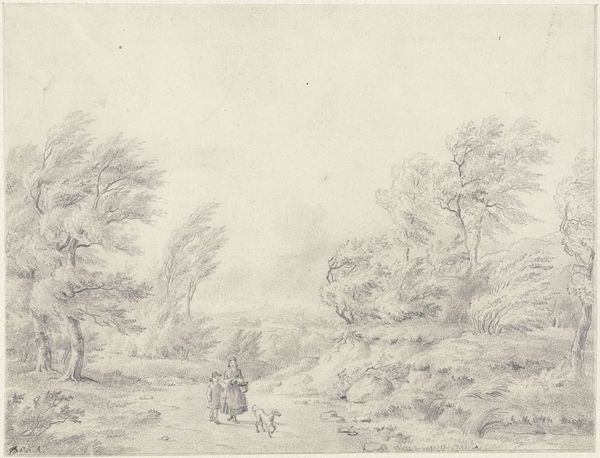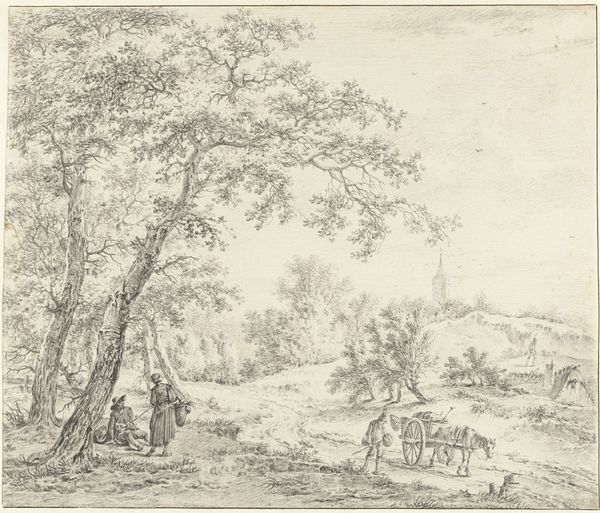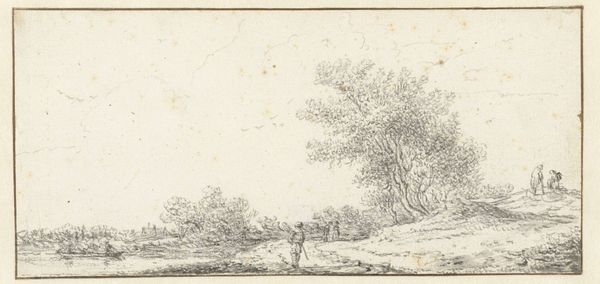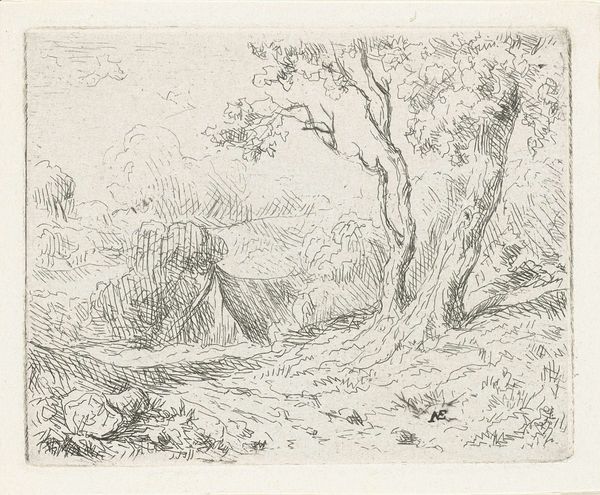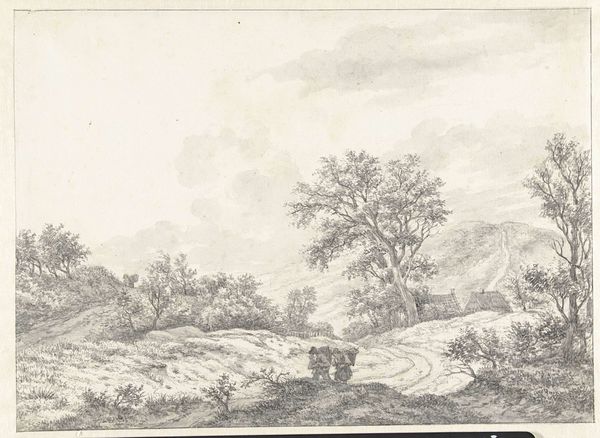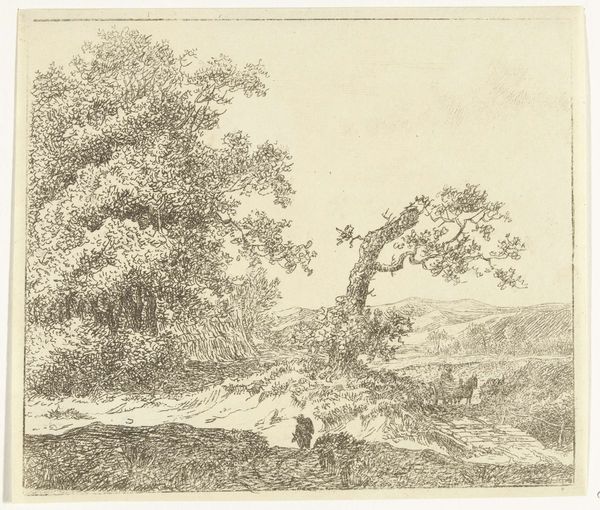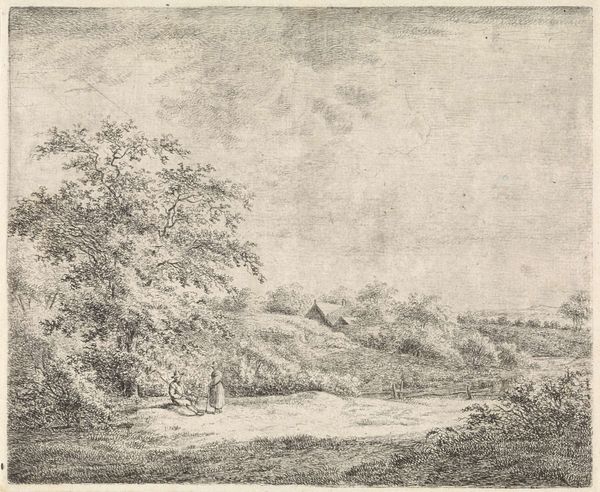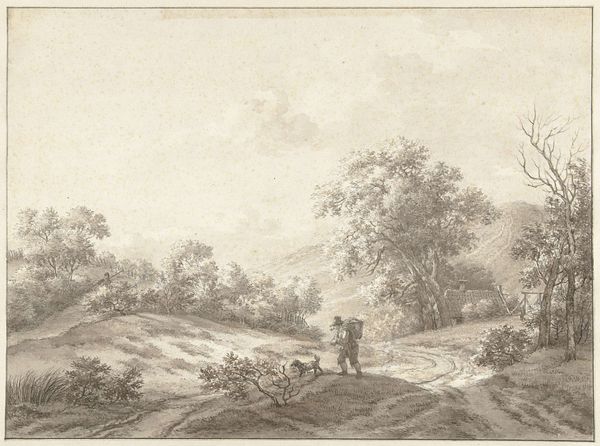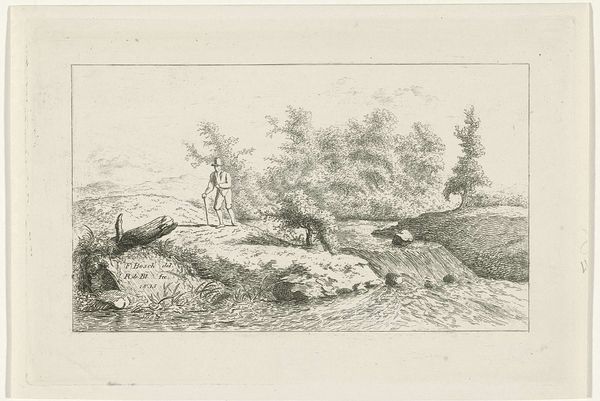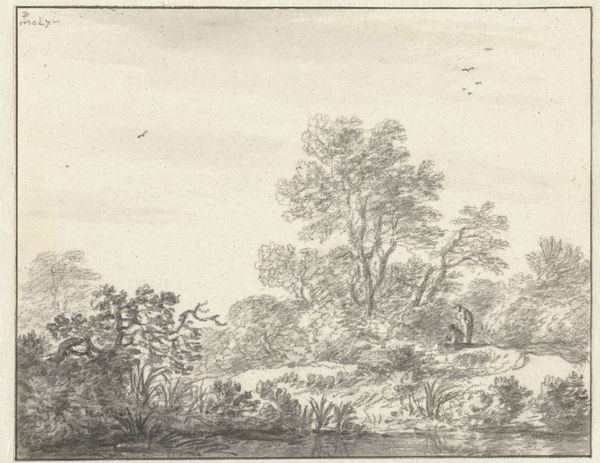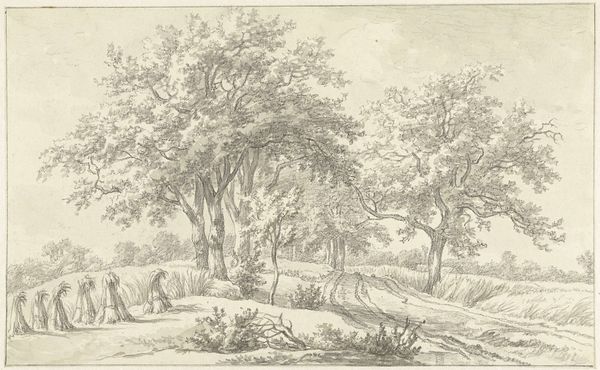
drawing, pencil, graphite
#
drawing
#
pencil sketch
#
landscape
#
romanticism
#
pencil
#
graphite
Dimensions: height 264 mm, width 317 mm
Copyright: Rijks Museum: Open Domain
Curator: This delicate pencil drawing invites us into a peaceful Dutch landscape. Rendered by Johan Christiaan Willem Safft between 1788 and 1849, the work, entitled "Duinlandschap bij Bloemendaal," captures a scene of quiet observation. What strikes you upon first glance? Editor: Hmm, melancholy. Definitely melancholy. It's the way the light falls, soft, diffused. And that skeletal tree in the foreground, it feels like a visual memento mori, hinting at impermanence amidst this otherwise serene scene. Curator: Absolutely, and situating this within the period of Romanticism, that sense of fleeting beauty and emotional resonance is so critical. The landscape itself, the dunes near Bloemendaal, north of Haarlem, become a stage for contemplating human existence in relation to nature's grandeur. Think of the broader sociopolitical context; these artists grappled with emerging industrialization and social change, seeking refuge and meaning in the natural world. Editor: Makes sense. I'm drawn to the way the artist uses the graphite to build up layers of atmosphere. See how the distant hill almost dissolves into the sky? It’s not just documentation; there’s a definite attempt to capture a mood, a feeling. Curator: The medium of graphite allows for such incredible detail and subtle tonal variations. Safft uses hatching and cross-hatching to define forms and create depth, look at the different textures of the foliage. Moreover, consider how artists of the time were developing their landscape techniques alongside advancements in scientific understanding of the natural world. There was growing appreciation of botany and geology—inspiring more realistic and intimate depictions. Editor: I suppose you're right. It feels like he's saying something profound. Like a whisper carried on the wind, "Everything beautiful fades..." But also, maybe, "Beauty persists in decay". I don't know! Curator: That’s precisely the evocative power of this type of work, inviting layers of interpretation across different contexts. Editor: Indeed. I find it very moving. It gives you pause to reflect upon life. Curator: A worthy piece that reflects the transient beauty that encompasses the era.
Comments
No comments
Be the first to comment and join the conversation on the ultimate creative platform.
